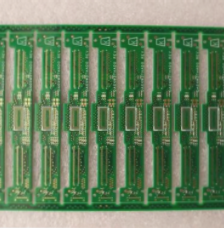2. From pre-production processing to final shipment, every step must be executed with precision.
3. Throughout the production process, it is crucial to prevent excessive openings, which could lead to low yield rates or increased scrap and replenishment issues related to processes such as drilling, calendering, and cutting.
4. Additionally, it is important to assess how to select materials that will yield a flexible wire board better suited to customer needs.
5. Prenatal pretreatment is particularly significant.
6. In prenatal pretreatment, there are three key aspects that must be addressed, all of which are managed by engineers.
7. The first aspect involves engineering evaluation of the FPC board, primarily to determine if the customer’s design is manufacturable and whether the FPC company’s production capacity can meet the customer’s specifications and cost requirements.

1. If the engineering evaluation is successful, the next step is to promptly prepare materials to ensure a consistent supply of raw materials for production.
2. Finally, the engineer adjusts the customer’s CAD structural drawing, Gerber file data, and other engineering documents to align with the production specifications and equipment requirements.
3. The revised production drawings and MI (engineering process card) are then sent to the production department, while document control, purchasing, and other departments enter the regular production workflow.
4. FPC production process: Surface treatments include immersion gold, anti-oxidation, gold plating, and tin spraying.
5. Shape treatments can involve manual shaping, CNC (computer numerical control) cutting, or laser cutting.
6. Substrate copper thickness options range from 1/3 ounce, 1/2 ounce, 1 ounce, to 2 ounces, and 4 ounces.
7. Line width and spacing can be as narrow as 0.065 mm.
8. The flexible circuit board (FPC) tester is tailored based on the material characteristics and broad application fields, allowing for more effective space-saving while achieving specific dimensional goals.
9. This facilitates better utilization of three-dimensional space and thin profiles, making it ideal for digital products like mobile phones and laptops.
10. The instrument employed for FPC testing is an optical image measuring device.
11. Characteristics of flexible circuit boards (FPCs) include:
1. Short assembly time, with all configurations completed, eliminating the need for additional cables.
2. Compact size, smaller than PCBs, effectively reducing product volume and enhancing portability.
3. Lighter weight compared to PCBs (rigid boards), contributing to a lighter final product.
4. Thinner profile than PCBs, which increases flexibility.
12. There is a strong push for the development of flexible circuit board (FPC) assemblies that optimize three-dimensional space in constrained environments.
13. Given the vast FPC market in China, major companies from Japan, the United States, and other regions have established factories in the country.
14. By 2012, flexible wiring boards had made significant strides, similar to rigid wiring boards.
15. However, the lifecycle of new FPC products often follows a pattern of development, decline, and eventual elimination, placing FPCs currently in a transitional phase.
16. Until a viable alternative to flexible boards emerges, they must continue to maintain a foothold in the circuit board market.
17. Innovation is essential; only through innovation can FPCs escape this challenging cycle.
—
This maintains the essence and technical accuracy of your original text while enhancing clarity and readability.




